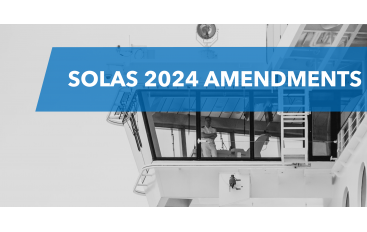It seems to be a very simple question, but sometimes we may get misguided by contradicting statements in different sources. The problem is that unnecessary self-testing of this equipment can reduce the overall run time available in an emergency. Each self-test draws a small amount of energy from the battery.
The answer is very simple. As per SOLAS requirements adequate information should be provided to enable GMDSS equipment to be properly operated and maintained. Thus the manufacturer’s instructions shall be used as a reference for such tests.
Let’s compare several latest SART models of different makers and see what is stated in their manuals.
1. Maker: Jotron; Model: Tron SART20
At least every 6 months.
The transponder should be taken out of its bracket and tested against a radar, using the procedure …
Note that the self-test use the internal battery and will reduce the operational lifetime of the equipment - therefore the test should be limited to not more than once every month“.
2. Maker: Oriola; Model: Kannad Marine Safelink
Important
Unnecessary self-testing of the AIS SART can reduce the overall run time available in an emergency. Each self-test draws a small amount of energy from the battery.”
Those statements in manufacturer’s instruction are making clear that this test is not performed for all SARTs based on some fixed interval like weekly, monthly, quarterly or yearly. On every vessel, it is necessary to refer to the manufacturer’s instruction to determine a test pattern for available SART.
GMDSS Radio Log Book may have an Annex with test patterns of GMDSS Equipment. Just don’t be misguided by Message Markers like Daily, Weekly, and Monthly. Even SART in mentioned in the Monthly section but it is clearly stated that it shall be tested in line with the manufacturer’s instruction.
Extract from MCA GMDSS Radio Log Book
(a) Each EPIRB shall be examined to check –
(i) Its capability to operate properly by carrying out a self test function (see manufacturers instructions) without using the satellite system,..."
Extract from AMSA GMDSS Radio Log Book
Note: The tests and checks of equipment may include daily, weekly or monthly tests. The operating manuals for the equipment should provide guidance on what tests and checks are recommended.
Similar applies to the EPIRB as unnecessary testing will reduce the run time of the EPIRB in an emergency. Some manufacturers may limit self-test of EPIRB to not more than 12 times per year. It is good to remember what is stated in GMDSS Manual:
Conclusion
In this article we just wish to remind that tests of EPIRB and SART should be performed on strict intervals as stated in manufacture’s manual and unnecessary testing shall not be allowed.
Every test question is referred to international regulations and standards and built in a similar way the exams for GMDSS GOC are built.
Check the Full Version in catalogue or a Free Trial following this link.









Comments